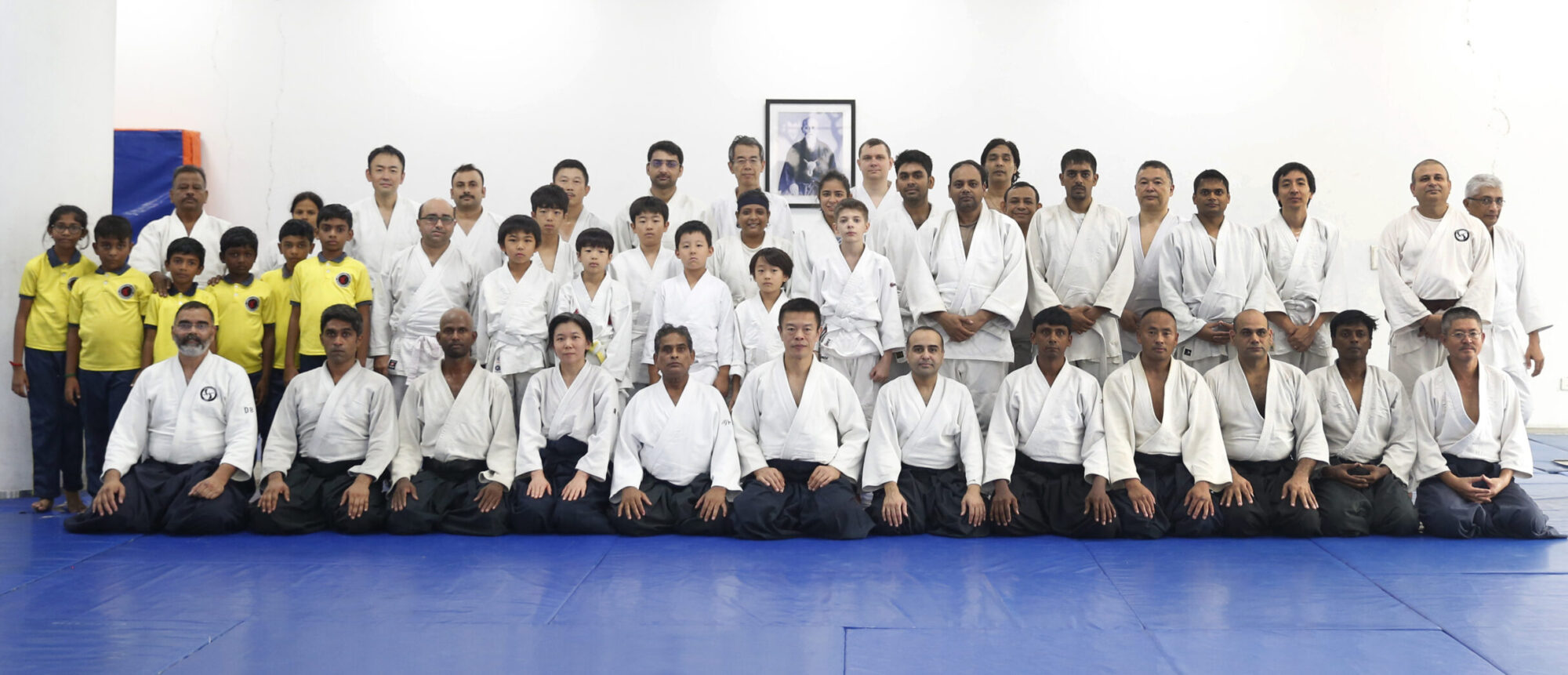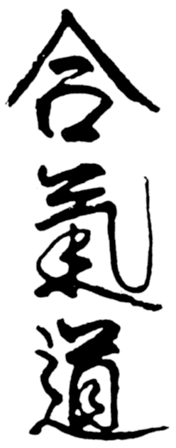What is the Literal Meaning of Aikido?
The Japanese word Aikido consists of three characters. The first two kanji characters that comprise the word aiki or ai, mean “to come together, to blend, to join,” while ki refers to “life
force” or “spirit.” Do, the third character in the word, means “Path” or “Way”. Thus Aikido can be translated as “the way of unity with the fundamental force of the universe”.
What is Aikido?
Aikido is a true Budo, or a “Martial Way.” It has evolved in the historic tradition of Japanese warrior arts. Since Aikido’s movements and techniques arise from the most efficient utilization of the entire person, the practitioner, regardless of physical strength, can develop great power. Instead of an emphasis on punches or kicks against opponents, Aikido uses the energy of their attacks to throw or gain control of them. Rather than being a static martial art, there is a great emphasis on circular movement around a stable, dynamic center.
Aikido Practice
Aikido is a unique, contemporary Japanese martial art. While it is an effective form of self-defense, based on decades of applied technical research and practice, Aikido can also nurture the inner strength and spiritual side of an individual-the body, mind and spirit. Practice encompasses a broad range of training styles, and allows people to train based on their individual stage of development. People from all walks of life practice Aikido: men, women, the elderly, children, business people, students, athletes, professional dancers, and practitioners of other martial arts. Even physically handicapped people have practiced Aikido and benefited from it.
History
The Japanese word Aikido Morihei Ueshiba introduced Aikido in Japan in
the early twentieth century, by synthesizing and transforming several traditional Japanese fighting arts. From an early age, Morihei Ueshiba, known to millions of Aikido practitioners as O-Sensei (or Great Teacher), was an extraordinary martial artist, a master of the sword, staff and Ju-Jitsu. Yet O-Sensei was a deeply spiritual man, and troubled by the futility of a path based solely on victory over others. He desired a system that could enrich and empower individuals in their daily life, where a person could ultimately achieve success through a development of power, calmness, and confidence. O-Sensei’s Aikido came from this spiritual desire to promote peace in society, through the development of harmony in thought, word and action.
Because of O-Sensei’s teachings and the efforts of many dedicated teachers and students, Aikido has become increasingly popular in many other parts of the world outside of Japan. Today it is practiced in places like the United States, South America, Europe, South-East Asia and Russia.
Aikido Training and Health
Like any system of physical training, Aikido is good for one’s health. Regular
practice stretches the body, improves circulation and helps to coordinate one’s breathing with balanced, harmonious movement. Aikido practice and the meditative space of the Dojo can help to decrease and transform our day-to-day and nervous stresses. Furthermore, by stimulating both physical and mental faculties, Aikido encourages harmony in the whole being. It helps us manifest both our inner and outer beauty.
Aikido training works on many levels of each practitioner. Careful training with a partner allows one to train without injuries – it is a style of training that easily adapts to the needs of each person. This combination of physical and intellectual exercise benefits all, regardless of age, gender, race, or religion.
Aikido and Healing Arts
Traditional Asian medicine often promotes a “hands-on” approach to healing. So while the locks and pins in Aikido are designed to immobilize an opponent, they also stimulate the joints and serve as a vigorous form of massage. Aikido is a healing art. Perhaps its greatest value is as a system that promotes good physical and mental health. We all, at some point, must face up to illness, aging, death and the loss of loved ones. While Aikido practice does not guarantee freedom from physical and psychological ailments, it can help us accept the challenge, root out its source, work with it, and not accept defeat.
Medicine for a Sick World
Aikido is medicine for a sick world. O-Sensei, Morihei Ueshiba – the founder of Aikido – once wrote that evil and disorder exist in the world because people have forgotten that all things emanate from one source. To cure the world of this sickness, he felt that we needed to return to that source and leave behind all self-centered thoughts, pretty desires, and anger – this is what he considered the path of aiki. As a result, in Aikido there are no competitions. There is no need for achievement based on artificial standards. Each trains according to their capability. The struggle is ultimately with oneself, on one’s own path of Aikido.







You must be logged in to post a comment.